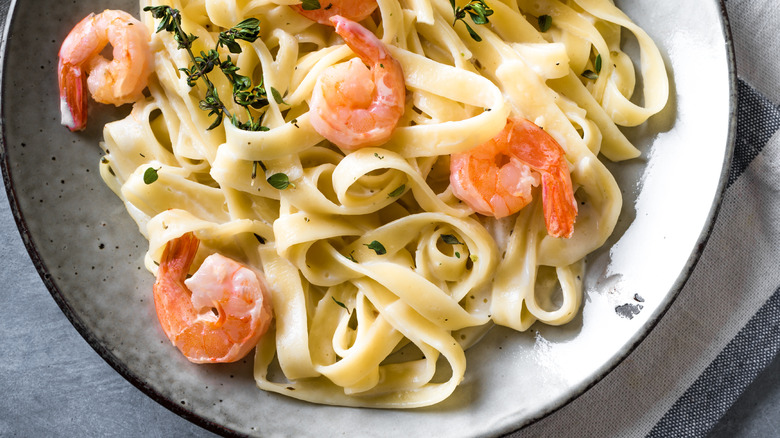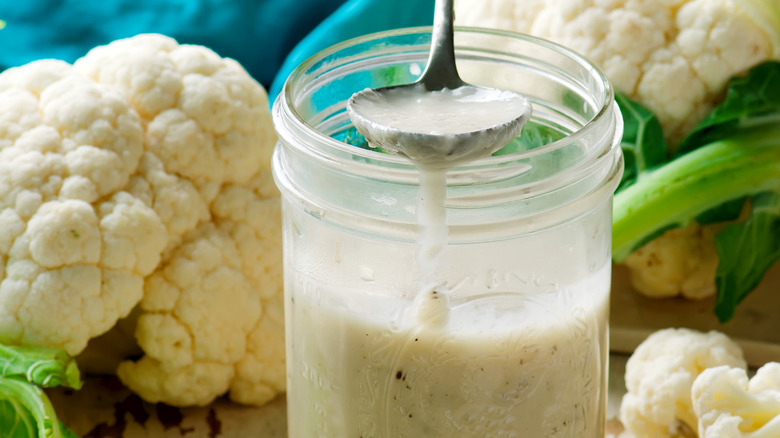How To Make A Less-Dense Version Of Fettuccine Alfredo, According To The Good Dish
Alongside spaghetti carbonara, lasagna, and baked ziti, fettuccine Alfredo is one of the most well-known Italian pasta dishes. According to Forbes contributor and author John Mariani, the famed fettuccine dish was invented by a man named Alfredo di Lelio in Italy. He needed to make something that his pregnant wife could stomach. His creation? Pasta tossed with white sauce and Parmesan cheese, which turned into fettuccine Alfredo as we know it today.
However, for as delicious as a heaping plate of fettuccine Alfredo can be, it's hardly one of the most nutritious options on the menu at your favorite Italian restaurant. It's loaded with fat, carbs, and calories. "The combination of butter, cream, and Parmesan cheese that makes up the sauce easily clogs your arteries," Eat This, Not That says. Fortunately for people who are looking for a lighter version, there's a less-dense way to enjoy the popular pasta dish. Gail Simmons' "The Good Dish" recently shared a hack for healthier fettuccine Alfredo on Instagram. All you need is one secret ingredient.
Use cauliflower to make Alfredo sauce
If you love fettuccine Alfredo but don't always love the richness of its sauce, you aren't alone. According to Gail Simmons on a recent episode of "The Good Dish" on Instagram, the dish is famously "heavy" and "intense." Her solution? Use cauliflower as the base of your Alfredo sauce instead of cream. She blends the cruciferous veggie in a food processor with whole milk, salt, pepper, and nutmeg to create a lighter and healthier sauce. Pour it over your cooked noodles and voila!
Vegan blogger Chocolate Covered Katie is a fan of cauliflower Alfredo sauce, as well. "You get a rich and creamy sauce without all the extra fat and cholesterol, and it sneaks in a vegetable serving you won't even know you're eating!" she writes on her recipe. Cauliflower is low in calories yet high in important vitamins and other nutrients, like vitamin K, vitamin C, and fiber (via Healthline).

